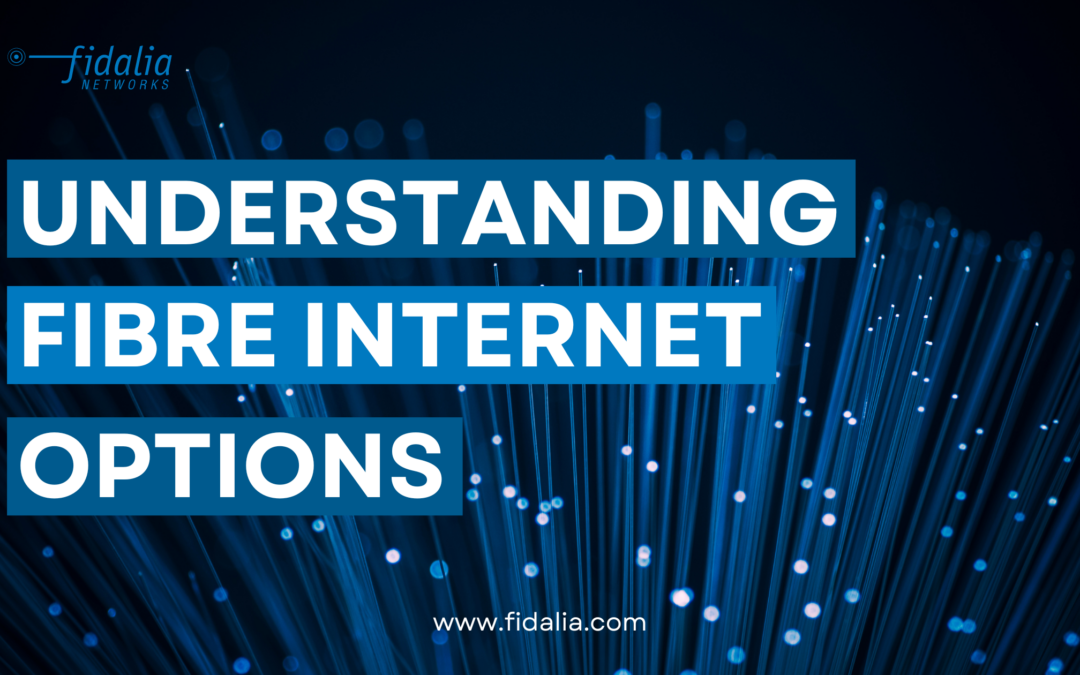Understanding the Difference between DIA and GPON Fibre
Late in 2023, the CRTC (Canadian Radio-television and Telecommunications Commission) announced that 3rd-Party Internet Service Providers would gain access to the fibre networks of incumbent
Last fall, In a significant move towards fostering competition and innovation in Canada’s telecommunications sector, the Canadian Radio-television and Telecommunications Commission (CRTC) announced its decision to open up competition in the shared-fibre market for Third-Party Internet Access (TPIAs).
What does this mean for you?
Well, it means that Bell, Rogers, and Telus must offer their fibre networks to independent ISPs – like Fidalia. So, when all of this comes into play this week, you’ll now have more options when it comes to procuring fibre internet services.
But.. not all fibre is the same. Fidalia has been providing fibre-based services to customers for the last ten years. The main difference is that this new “Fibre” (Bell Fibe is an example) is shared infrastructure. So yes, it’s very fast, and yes, it’s glass – but it isn’t dedicated.
So we’re going to explain the differences between DIA and GPON (the new stuff).
Understanding the nuances between these two technologies is essential for businesses aiming to make informed decisions about their connectivity infrastructure. Let’s delve into the details.
1. Understanding DIA
Direct Internet Access (DIA) is a solution that provides a dedicated connection to the internet, offering high-speed connectivity directly to the end-user without the need for shared resources. Unlike traditional broadband connections, which may suffer from congestion during peak hours, DIA ensures consistent performance and reliability. This makes it an ideal choice for businesses with demanding bandwidth requirements, such as those in the finance, healthcare, or technology sectors.
DIA operates by establishing a direct link between the user’s premises and the internet service provider (ISP) network. This dedicated connection guarantees symmetrical upload and download speeds, enabling seamless data transfer and real-time collaboration. Additionally, DIA solutions often come with robust service level agreements (SLAs), guaranteeing uptime and performance metrics to meet the stringent demands of enterprise clients.
2. Understanding GPON
Gigabit Passive Optical Network (GPON) is another fiber optic solution that leverages passive optical splitters to deliver high-speed internet access to multiple users over a shared fiber infrastructure. In a GPON network, a single optical line terminal (OLT) serves multiple optical network units (ONUs) or customer premises equipment (CPE), allowing for cost-effective deployment and efficient use of resources.
GPON operates on a point-to-multipoint architecture, where the OLT serves as the central point of control, managing communication between the service provider and the end-users. Despite the shared nature of the infrastructure, GPON offers impressive bandwidth capabilities, with downstream speeds of up to 2.5 Gbps and upstream speeds of 1.25 Gbps per user. This makes it a popular choice for residential broadband services and multi-tenant environments where cost-efficiency and scalability are paramount.
3. Comparison between DIA and GPON
When comparing DIA and GPON, several factors come into play, including bandwidth and speed, scalability, cost considerations, reliability, and flexibility.
- Bandwidth and Speed: DIA typically offers higher bandwidth and symmetrical speeds compared to GPON, making it suitable for businesses with demanding performance requirements.
- Scalability: GPON excels in scalability, allowing service providers to easily expand their networks and accommodate more users without significant infrastructure investments.
- Cost Considerations: While DIA may have higher upfront costs due to its dedicated nature, GPON offers cost-effective deployment and operational savings over time, especially in multi-user environments.
- Reliability: Both DIA and GPON can provide high levels of reliability when implemented correctly, although DIA’s dedicated connection may offer slightly better performance guarantees in some cases.
- Flexibility: DIA provides greater flexibility in service customization and traffic prioritization, making it suitable for businesses with specific requirements or regulatory compliance needs.
| Criteria | DIA typically offers higher bandwidth and symmetrical speeds. | GPON offers high bandwidth but may not be symmetrical. |
|---|---|---|
| Bandwidth and Speed | DIA typically offers higher bandwidth and symmetrical speeds. | GPON offers high bandwidth but may not be symmetrical. |
| Scalability | Less scalable compared to GPON. | Excels in scalability, allowing for easy network expansion. |
| Cost Considerations | Higher upfront costs due to dedicated nature. | Cost-effective deployment and operational savings over time. |
| Reliability | Offers slightly better performance guarantees. | High levels of reliability when implemented correctly. |
| Flexibility | Greater flexibility in service customization and traffic prioritization. | May offer less flexibility compared to DIA. |
4. Choosing the Right Option
Ultimately, the choice between DIA and GPON depends on factors such as business needs, budget constraints, and growth plans. Businesses with high-performance demands and a need for dedicated connectivity may find DIA to be the ideal solution, while those prioritizing cost-efficiency and scalability may opt for GPON.
In conclusion, both DIA and GPON offer distinct advantages and cater to different use cases in the realm of fiber optic connectivity. By understanding the differences between these two technologies and evaluating their suitability for specific requirements, businesses can make informed decisions to meet their connectivity needs effectively.
Fidalia Networks, as of next week, will be able to provide both GPON and DIA Fibre services to business customers across Canada. Talk to an expert today to learn more and to get a quote for Fibre at your site.
